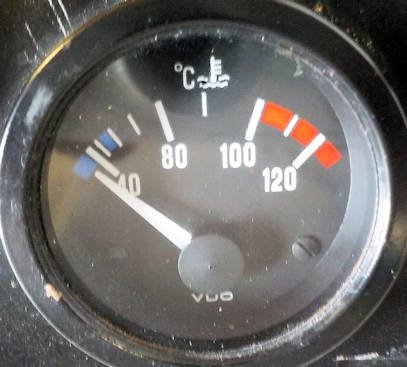Water temperature gauge

Why the Water temperature gauge is important and how it works and why it is essential on older and modern cars.
A water temperature gauge gives an early warning if the engine is running too hot or too cool.
Allow the vehicles engine to get to temperature. After a cold start the needle should reach the normal setting after about 3 miles 5 kmh. Do not drive very hard before it does in cold weather.

In town or or stop-start driving traffic and in hot weather, the water temperature in the cooling system may rise above the normal — 80-88°C — range but should not reach the hot mark this is around 95°+ depending on engine check your cars normal temperature .
If the needle rises abnormally on the open road, stop and investigate at once. Unless the thermostat has stuck the cause will probably be.
- Broken fan belt (replace if auxiliary item)
- Leaking or blocked radiator (check for leaks but also internal blocks or even bag or paper blown over front of radiator)
- Broken or split hose (check for cracks or insecure clips)
- Possibly a water pump. (May be worn such as bearings or damage blades heavy corrosion)
- Cooling Fan(fans) possibly sender unit or fuse not activating at temperature blocked Debre dirt)
Caution! Always Let the engine cool before removing the radiator cap.
Top up with coolant. Or in emergency to get you home clean water (hot, if possible) or water from the windscreen washer allow engine to cool first.
Important! re-flush system with correct coolant as soon as possible.
